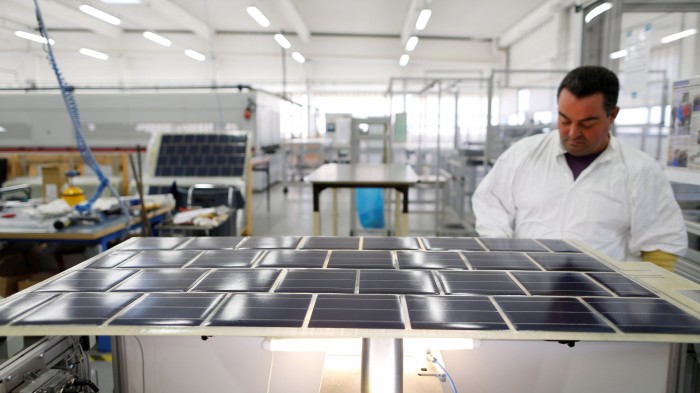Clean Technology Innovation Is in Decline

These last two years, we’ve been having fewer green technology ideas.
At least that’s according to a new study by the Brookings Institution, which reveals that the number of clean energy patents granted in America has declined since 2014. While the number of new patents per year doubled between 2001 and 2014, it has since fallen by 9 percent (see chart below). You can explore the data in detail using this interactive tool.
What's going on? For one thing, there’s currently little financial incentive to develop new clean energy technologies—it’s still far easier to make money by developing, say, consumer-facing technologies than it is to turn a profit with new kinds of batteries, solar panels, wind turbines, or nuclear reactors. But Mark Muro, senior fellow and policy director at Brookings, points out that it may also coincide with Obama’s Recovery Act, a 2009 stimulus package that poured $27 billion into energy efficiency and renewables research, running dry.
In isolation, the news wouldn’t be too concerning: a 9 percent dip over two years could just be a short-lived blip that soon rebounds. But in the current political climate it could prove cause for concern, as the Trump administration has proposed big cuts to federal energy research and the complete closure of the Department of Energy’s moonshot unit, ARPA-E. If those plans go ahead, says Muro, the decline in innovation could “prompt serious worries.”
Without federal funding injections to foster clean energy research it's unlikely that the number of patents will start to rise, which will make it harder to boost the number of new green technologies that get commercialized. And that in turn will make it much harder to meet the demands of the Paris climate agreement, which seeks to ensure the planet doesn’t warm more than 2 °C beyond pre-industrial levels.
Question is, what can be done to turn the situation around? Ideally, as our own editor-in-chief Jason Pontin recently argued, the country would invest more heavily in R&D. More realistically, though, inaction on the part of the Trump administration would be the best we could hope for—because that would allow the Department of Energy to continue funding applied research and ensure that ARPA-E remained able to fund its moonshots.
But Muro points out that all is not lost if Trump does pull federal funding of clean energy innovation. States can still foster energy research at universities and continue to enforce stringent clean-energy rules, for instance, while cities could continue to build innovation hubs focused on the development of clean technologies. And hopefully, people might have more good clean energy ideas along the way.
(Read more: “Capitalism Behaving Badly,” “Trump’s Budget Would Mean Catastrophe for U.S. Climate Programs,” “Make America Great Again”)
Keep Reading
Most Popular
Large language models can do jaw-dropping things. But nobody knows exactly why.
And that's a problem. Figuring it out is one of the biggest scientific puzzles of our time and a crucial step towards controlling more powerful future models.
The problem with plug-in hybrids? Their drivers.
Plug-in hybrids are often sold as a transition to EVs, but new data from Europe shows we’re still underestimating the emissions they produce.
Google DeepMind’s new generative model makes Super Mario–like games from scratch
Genie learns how to control games by watching hours and hours of video. It could help train next-gen robots too.
How scientists traced a mysterious covid case back to six toilets
When wastewater surveillance turns into a hunt for a single infected individual, the ethics get tricky.
Stay connected
Get the latest updates from
MIT Technology Review
Discover special offers, top stories, upcoming events, and more.